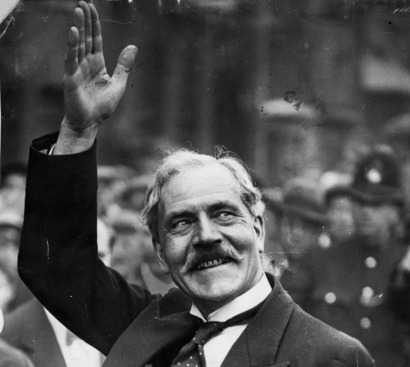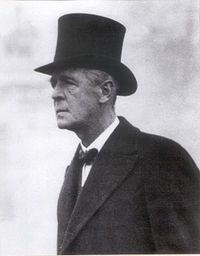by Pete Goddard and Atul Hatwal
On December 9th 1923, the day after the general election, it became clear that civilisation was teetering on the brink of destruction.
Well, that’s what the British establishment seemed to think as the prospect of a Labour government was suddenly a real possibility.
Although the Tories were the largest party with 258 seats, crucially they did not command a majority in the House of Commons and the third place Liberals did not seem willing to sustain them in office.
In the wings, there was Labour, the understudy government breathlessly wondering if tonight was to be their night to take the lead role.
But despite the parliamentary arithmetic, Labour’s turn in the limelight seemed far from certain.
The critics at the Times weren’t happy. The Thunderer called for a coalition between the Liberals and Conservatives in the national interest. The national interest being anyone but Labour.
Some in the Lords favoured a more innovative approach. The large Labour vote obviously meant democracy was broken, so the logical next step was to create a government of “national trustees”.
This would involve simply jettisoning the whole bothersome democratic process and appointing a government of officials certified as independent, fair-minded and not-Labour.
They even had a man in mind to run it all – Reginald McKenna. Home secretary under Asquith until 1916, McKenna was definitely a decent and trust-worthy chap, as evidenced by his two career choices so far: politician and banker.
Others were more resigned to the impending cataclysm. Over at the English Review, apparently edited by a proto-Melanie Phillips, their view on a possible Labour government was that “the sun of England seems menaced by final eclipse,” which would at least explain the weather that year.
Winston Churchill chipped in too. At this point a defeated Liberal, he declared in his usual understated manner that a Labour government would be “a national misfortune such as has usually befallen a great state only on the morrow of defeat in war.”
Even in Labour ranks there was doubt. Many wondered if the party should risk forming a relatively powerless minority government.
It took a series of meetings of the NEC, PLP and party executive to conclude that a party that didn’t want to go into government wasn’t much of a political party at all. If the opportunity arose and they didn’t take it, they might as well give up politics altogether and start stamp collecting instead.
For nine days, “will they, won’t they” speculation raged on whether Labour would become the next government. Finally, on December 18th, Herbert Asquith confirmed that the Liberals would not keep the Tories in office or join in any move to keep Labour out.
This was it. Labour was now definitely headed for government.
“Phew” thought Labour.
And then panic number two set in.
Government meant Labour people in real ministerial jobs with departments and responsibilities and everything. But no one had any real idea of who would do what or how.
Ramsay Macdonald had no formal shadow cabinet, just an assortment of senior Labour MPs, each expecting a reward for their years of service.
He needed to make some big choices and had just under a month to make them.
The Tories were committed to hanging on to the seals of office until the last possible moment. As the largest party, they were going to bring forward their Kings speech on January 15th 1924.
This would be the point where Labour and Liberals would vote down the Tory proposal, and Labour’s time would come. It meant Macdonald had the Christmas break to work out which of his people had been naughty or nice (or this being politics, outspoken or obedient) and who would get a cabinet appointment in his stocking.
Top of the list of jobs to fill and trickiest of all, was foreign secretary. Macdonald’s preference was the wily railwaymen union leader, Jimmy Thomas. Thomas was widely respected in the parliamentary party, possessed keen political sense and, if asked nicely, would probably let Ramsay Macdonald drive a train.
Unfortunately for Macdonald, Thomas was also a bête noire of the left wing ILP. He had been a robust supporter of World War I, had served in the wartime governments and as leader of the railwaymen was blamed by many on the left for letting down the miners on Black Friday. He probably mimed when singing the Red Flag as well.
Thomas as foreign secretary would have meant untold trouble from the left on day one.
Given Macdonald’s distinct views on foreign policy, there weren’t many alternatives. But there was one other candidate Macdonald had every confidence in – Mr Ramsay Macdonald. He decided he would be foreign secretary as well as prime minister.
It took working for yourself to a new level and it also betrayed a worrying inability to trust his colleagues.
Saying things like, “We shall have to put into some of the offices men who are not only untried but whose capacity to face the permanent officials is very doubtful,” probably didn’t help either.
At the Treasury, Macdonald installed the ILP’s Philip Snowden, a man who had spent the past years focusing on the economy. Snowden was widely admired in the party and a doyenne of the left. Even though he and Macdonald had a testy relationship, anything other than chancellor for Snowden would have meant lots of very public early dissent for Labour’s putative PM to deal with.
The home office was promised to centrist Labour stalwart Arthur Henderson. This was fairly unconventional as Henderson wasn’t actually an MP at the time, having contrived to lose his Widnes seat at the election. It was a troubled appointment in other ways too, with confusion over whether Henderson was Macdonald’s first choice leading to bad feeling that wasn’t to be forgotten.
From the right of the party, Jimmy Thomas’ consolation prize for missing out on the foreign office was secretary of state for the colonies, which was like the foreign office, but without the need to be polite to the other coutries.
Finally, of bigger jobs, J.R.Clynes received a “sorry for kicking you out of the leadership” job as lord privy seal, which tragically did not involve balancing a ball on his nose and clapping his flippers together.
On paper it seemed the left were in charge, controlling three of the four great offices of state: prime minister, chancellor and foreign secretary. Macdonald’s Christmas present for the country looked like it was going to be a strong dose of socialism.
But a broader look at the cabinet gave a quite different impression.
For all the increased representation of the ILP in the Labour party as a whole, the more doctrinaire members of the left were largely overlooked in Labour’s first government.
The list only included two left wingers from the substantial red Clydeside element of the party. John Wheatley went to Health and Housing and Fred Jowett to Works.
Even worse for the left, the cabinet included not just five ex-liberals and two ex-Tories, but also one member who still WAS a Tory.
In an effort to emphasise continuity for the armed services, Macdonald had surprisingly selected the Conservative Lord Chelmsford for the Admiralty.
Admittedly the non-Labour elements were concentrated in the Lords, where socialists were unsurprisingly thin on the ground. But the centrist bent of Macdonald’s government was undeniable as was his overwhelming desire for the PLP to play nicely and not rock the boat on getting into power.
The Kings speech debate took place on the 15th January with Macdonald ready for his moment. J.R.Clynes moved the amendment on the speech in the name of the Labour party on the 17th January and by the morning of 22nd, Baldwin had resigned.
Macdonald’s appointment with the King was set for midday 22nd January.
Labour was finally going to form a government.
Crikey.
Pete and Atul are not historians
Tags: Atul Hatwal, Jimmy Thomas, Labour history uncut, Pete Goddard, Ramsay Macdonald, the Times












“Government meant people in real ministerial jobs with departments and responsibilities and everything. But no one had any real idea of who would do what or how.” My, how things have changed! Now our Ministers, from whatever party, are so well prepared for managing……..
In the old days we had good old fashioned amateurs playing it by ear.
Now we’ve got professional politicians who’ve been weaned on Politics, Economics, and Internships, from the cradle. Its a disgrace.
The Left’s favoured candidate for Foreign Secretary had been E.D.Morel who, along with E.Scrymgeour, had defeated Winston Churchill at Dundee in 1922 (it was a 2-member seat) and who had founded the Union for Democratic Control to oppose WWI.
Sir Charles Trevelyan who became President of the Board of Education had resigned as a junior minister at that department in protest at the British declaration of war on Germany in 1914. Arthur Henderson had been appointed to head the Board of Education when Asquith formed his Coalition in May 1915 and remained in the War Cabinet until dismissed by Lloyd George in August 1917.
Henderson was one of only two ministers who had previously sat in a Cabinet, the other was Lord Haldane, the Lord Chancellor, whose Cabinet experience dated back to 1905, although Lord Chelmsford had also been Viceroy of India from 1916-21. Lord Parmoor, the leader of the Lords, was the father of the future Chancellor of the Exchequer, Sir Stafford Cripps.
Ramsay Macdonald was the first PM to have held no government office prior to becoming PM although he has since been equalled in this by Tony Blair in 1997 and David Cameron in 2010.
Thanks Allan, really appreciate it when people add more info or other points of view in the comments.